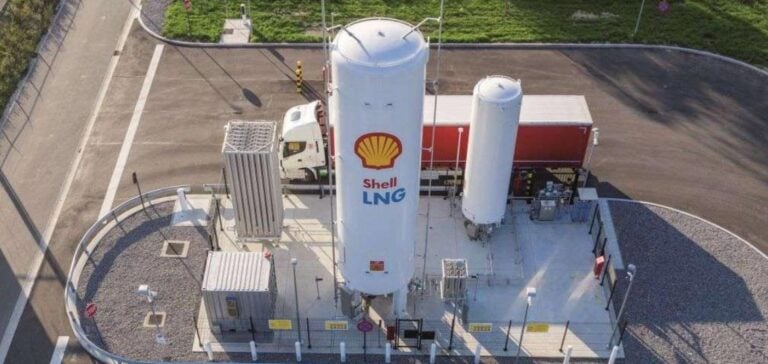British energy giant Shell PLC has recently stepped up its efforts in the liquefied natural gas (LNG) sector, with a series of strategic projects aimed at offsetting losses incurred after its withdrawal from Russia in 2022. These initiatives are part of a long-term vision, under the leadership of Wael Sawan, to meet the growing demand for LNG while reducing the emphasis on renewable energies.
In 2023, Shell announced several new projects in strategic regions such as the United Arab Emirates and Trinidad & Tobago, as well as the acquisition of a major trading portfolio. According to analysts, these movements represent half of Shell’s target to increase its LNG volumes by 20 million metric tons per annum (mtpa) between 2023 and 2030. In addition, Shell recently acquired Pavillon Energy, strengthening its position in the LNG market.
Shell Strategies and Objectives
These projects also enable Shell to recover supplies lost as a result of its withdrawal from Russia following Moscow’s invasion of Ukraine. This exit resulted in the loss of 2.5 mtpa of supplies from the Sakhalin LNG project and a 5% year-on-year drop in Shell’s liquefaction volumes in 2023.
Since the acquisition of BG Group for $53 billion in 2016, the integrated LNG division has become Shell’s flagship business. In 2023, this division generated almost half of Shell’s $28 billion in adjusted profits, underpinned by outstanding results from its trading business, the world’s largest LNG trader.
Recent investments and outlook
Last Wednesday, Shell announced that it had invested in a 10% stake in Abu Dhabi National Oil Company’s Ruwais LNG project, aiming to more than double the plant’s output to 15 mtpa by 2028. Shell will also buy 1 mtpa of this production, a project valued at around $5.5 billion according to Mitsui & Co Ltd, another partner.
At the same time, Shell has decided to develop its 2.7 trillion cubic feet Manatee natural gas field offshore Trinidad and Tobago, which will feed the country’s under-utilized 15 mtpa Atlantic liquefaction facility. Last month, Shell also signed an agreement to acquire Singapore’s Pavilion Energy, providing access to new gas markets in Europe and Singapore, as well as 6.5 mtpa of supply contracts worldwide.
Analysis and projections
These three agreements will enable Shell to achieve half of its growth target, according to Saul Kavonic, Head of Energy Research at MST Financial. Zoë Yujnovich, Shell’s Head of Integrated LNG and Upstream, reported in May that almost half of the projected growth for 2030, or around 11 mtpa, will come from projects under construction such as the massive North Field expansion in Qatar and the LNG Canada project, scheduled to come on stream next year.
Shell also plans to optimize existing LNG facilities such as the Prelude floating facility off the west coast of Australia and the Atlantic facility in Trinidad and Tobago. The company aims to maintain a 50-50 ratio between its own LNG production and volumes acquired from other producers.
Shell’s recent investments are in line with its strategy of considering LNG as a “critical fuel in the energy transition”. Although Shell presents LNG as a lever for decarbonization, its impact remains limited in relation to the objective of reducing the carbon intensity of its portfolio by 15% to 20% by 2030. By increasing the share of gas in its portfolio by 10% by 2030, Shell expects a 4% reduction in net carbon intensity, compared with a 14% reduction with equivalent renewable capacity.






















